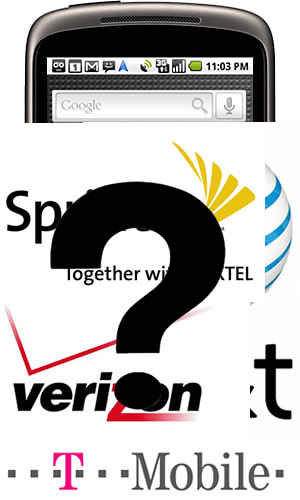With the release of Google’s Android Operating System and wave of new devices that came with us, a new trend seems to be appearing with the fancy new linux smartphones.
As we’ve seen with the famed Google Nexus One, and now Motorola with a confirmed, but unknown device, the developers are skipping the carrier and going direct to the consumer.
In past years, we were used to asking the big questions like the carriers that will cover a new device’s debut. But it seems that question begins to grow more and more distant in the present, as we’ve seen with the latest release of Android devices. Many of them come capable to several carriers, rebranded and released by a multitude of GSM and CDMA services. This lack of carrier interest however arises several questions.
For one thing, why? We’ve had a symbiotic relationship between mobile device developers and the GSM or CDMA carriers for some time now, why drop it out so suddenly? Could it be the control and rebanded done by each carrier, resulting in dislike and poor reviews on the developer’s devices while other carriers receive substantially higher reviews. Could it perhaps be entangling contracts and deals, a far cry from the small amount of subsidized cost on the phones. Could it even be a consumer attempt to choose the carrier, rather be chosen by the carrier?
All of these questions and more loom as both Google and Motorola intend to go direct to consumer with several devices, allowing them to then contact carriers for SIM cards, rather phones. Could it be the end of the carrier monopoly on device control for the American markets?
Or worse, could it be the end of CDMA, a radio division of mobile phones that you must buy carrier-specific phones for?

